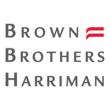B2B BNPL: how data can drive more financial flexibility
The recent global boom in buy now, pay later (BNPL) offerings begs the question as to why that’s suddenly happened.

BNPL has exploded in the B2C payments market, but should B2B be more flexible?
Offering buyers credit as part of a purchase has been around since antiquity, so what has changed? Since around 2000 BC, before the advent of physical money, merchants in the ancient middle east gave grain loans to farmers.
In the last century, laybys and credit cards have been prolific, enabling buyers to buy now and pay later. And yet we’re now seeing an explosion of a new variant.
The “new” BNPL industry is only scratching the surface of a relatively small market segment, yet the big three – Klarna, Affirm and Afterpay – have a combined market capitalisation of about $100bn, almost the same as Goldman Sachs.
What’s more, Apple and PayPal are moving in as well. The banks and credit card companies have huge businesses potentially at risk here. And the opportunity for a similar step-change in B2B is larger by orders of magnitude.
What has brought about this sudden shift? Simply, the BNPL fintechs have harnessed data and technology to create a better product and customer experience.
The improvements include greater flexibility and longer terms, instant KYC and underwriting, all embedded at the checkout. The e-commerce platforms where BNPL proliferates provide large networks and significant data that the BNPL fintechs harness.
There are also the tailwinds of rapid growth in e-commerce and a target market of younger shoppers who are sceptical about traditional credit offerings. But fundamentally it is data and technology that are delivering a better product and customer experience, and which is driving a step-change in adoption.
Incumbents in all payment markets beware! B2B networks have a huge opportunity to embed similar functionality and deliver very meaningful value to their customers.
The beauty of BNPL is that it allows consumer buyers to pay later. The need in B2B is the opposite – corporate buyers already pay later, often squeezing their smaller suppliers in the process. What is needed is the choice for their sellers to be paid now, i.e. “sell now, paid now” (SNPN).
The existing B2B platforms have the networks and data, so by applying the right technology a better product and customer experience can be delivered. Every seller should have the choice of when to be paid (in advance, at the point of sale or later). World-class data and technology delivers that choice through the leading networks.
Commerce basics
A purchase involves an exchange of goods or services for payment. The “payment terms” mean that the value exchange can be:
- Simultaneous = a “Cash” transaction
- Payment later = a “Credit” transaction
- Payment before = an “Advance payment” transaction
In the case of a credit transaction, there are different models for who provides the credit and who pays for it. Credit may be:
(a) provided by: the seller or a third-party intermediary, such as a bank that has issued you a credit card; and
(b) paid for: by either the seller or the buyer. With credit cards, the seller pays a fee (so when the local coffee shop sells you a cup of tea for $1, and you pay with a credit card, they only receive $0.98 because they pay a $0.02 interchange fee, and you the buyer will also pay a fee if you don’t settle your credit card account within 30 days of your statement).
BNPL operates in the same way: the credit fee is typically paid by the seller.
Whether the payment terms are cash, credit or advance payment is a function of the market norms and bargaining power of the buyer and seller. As consumers, we make “advance payments” for flights and hotels, we pay “cash” for many of our day-to-day transactions, and we also buy on “credit”.
Given the time value of money, an advance payment, cash or credit transaction each has a different value, which is rarely taken into account by a consumer. For a $100 purchase, assuming my marginal cost of capital is 12% and no other fees, then paying 3 months in advance actually costs me $103 and paying 3 months late costs me $97.
In consumer markets (B2C) and business markets (B2B) where the buyer is a smaller company, the default is typically a “cash” transaction. This is because the seller insists on being paid instantly, with a simultaneous exchange of value against the goods or services it provides.
Buyers would love to have the choice to pay later, which is why credit offerings such as credit cards and BNPL are so compelling, as they give the buyer the choice of paying later (and often that choice is paid for by the seller).
Data and technology driving BNPL
BNPL has exploded in the market because consumers love the flexibility and the lower upfront costs that it provides. What’s more important, however, is the superior user experience of BNPL compared to other credit products such as laybys and credit cards, and that experience includes longer terms and more flexibility.
The choice of BNPL is embedded into the checkout experience. All consumers have to do is choose their items, navigate to the checkout as normal, and there it is: a no-fuss and easily accessible choice to opt into paying later for their items, embedded seamlessly into their purchasing experience.
An “accessible choice” doesn’t just refer to a slick user interface — it’s also accessible in terms of financing. Companies like Klarna and Afterpay charge sellers (merchants) a fee to offer small point-of-sale loans which their shoppers repay in interest-free instalments, bypassing credit checks.
When evaluating their customers, BNPL providers rely on advanced risk analytics based on historical transactional performance data, along with a basic check of credit agency scoring, opening the invitation of credit up to individuals who otherwise may not have the option if they applied for a traditional credit card.
This is the reason that sellers are willing to embed BNPL into their customer journeys and pay the associated credit fees themselves rather than pass them onto the consumer.
BNPL gives existing customers who value longer payment terms or swifter product delivery the ability to maximise their value per purchase and buy more and is also a draw for a wider scope of new customers who can now easily make purchases they can plan their budget around.
Going beyond consumers and offering the same experience to small business customers is only a small step. Open banking and applied machine learning give lenders the ability to better predict the creditworthiness of small businesses, and an increasingly digitised credit evaluation process means that low-cost lending can be embedded in the checkout process just like in any B2C e-commerce platform.
Start-ups like Tillit, a Norway-based B2B version of Klarna, and Amsterdam-based Biller have already embarked on developing this model, with some offering the benefits of industry-specific specialisation or post-transaction services such as debtor management and guaranteed payouts.
Of course, there are concerns around BNPL. The industry is largely unregulated and there are concerns that consumers could end up taking on more instalment commitments than they can afford to pay back in the allotted interest-free time periods, especially in a credit crunch.
What can’t be denied is that BNPL is a demonstration of increased choice and availability of credit as a direct result of modern technological progress.
B2B – it’s already BNPL!
As noted above, when the buyer is a consumer or a smaller company, the default is typically a “cash” transaction, meaning the buyer pays at the time of purchase (and values the choice of being able to make it a credit transaction).
In B2B where the buyer is a corporate, however, the default is typically a “credit” transaction, meaning the buyer pays later than the time of purchase.
So with large corporate buyers, BNPL is the norm – they almost always buy now, pay later – with payment terms of 30, 60, 90 or 120+ days. The sale is a bundled transaction, where the seller is providing both:
(i) goods or services; and
(ii) a period of credit.
Large company sellers can price the value of the credit precisely, but smaller companies typically don’t and do not have the bargaining power to change the status quo. So a bundled transaction will typically work in the favour of a more sophisticated organisation.
Sellers would love to have the choice of a “cash” transaction, which is why early payment solutions such as virtual cards, dynamic discounting and supply chain finance have been developed.
But like laybys and credit cards in the consumer market, while those early pay products are useful, they are ready for a step-change. A crisp digital customer experience will drive that step-change in B2B just as it has done in the consumer market.
With the data and technology now available, buyers and sellers can have complete flexibility as to when they pay and get paid. Sellers would like the option of SNPN – the inverse of BNPL: a “pay me now” button as they submit their invoice.
But why do corporates prefer BNPL?
There are two reasons that corporates use BNPL:
- Financial advantage: it is advantageous to hold on to cash, and their bargaining power allows them to do this; and
- Process: they need to check that the goods and services are acceptable.
Each reason is taken as a given and not challenged, but neither reason stands up to scrutiny.
Financial advantage:
Viewed narrowly, it appears that the corporate is getting a “free loan”. The longer the key metric of DPOs (“days payable outstanding”) the better – an increase in a corporate’s DPOs results in the stock price going up.
Viewed holistically, this is not economically rational for a large, creditworthy buyer who trades with suppliers with a lower credit rating. The actual result of these “free loans” from small suppliers to large buyers is that the buyers end up paying for the suppliers’ finance cost (which is high) through the purchase price of the goods and services.
This is a problem of short-term thinking. By extending payment terms, a corporate gets a short-term gain in the form of a one-off boost to working capital but is then saddled with the long-term cost of higher cost of goods sold. It causes stress to suppliers and, when it goes wrong, can have a severe reputational cost for buyers.
It is not economically rational for a large corporate with a cost of capital of 2% to borrow from a small supplier with a cost of capital of 22%. This is changing. Enlightened corporates are waking up to the issue. And technology is making it easier for them. In an efficient market, the cost of financing the working capital to provide goods and services should be shifted to where it is lowest.
Process:
Money doesn’t flow until the buyer has accepted the goods or services (approved the invoice), and so the seller is at the mercy of the buyer’s approval processes.
This typically takes 10 to 20 days, but can be much longer. So regardless of payment method, there is a multi-week delay in all B2B payments where the buyer is a corporate, simply because of the process.
Existing early pay solutions, such as supply chain finance in its reverse factoring form and dynamic discounting, can only advance monies once the buyer has approved an invoice. Even when the buyer pays on a virtual card – the virtual card isn’t instantiated until the buyer signals its approval.
This is a fundamental tenet of corporate purchasing that is simply out of date. In B2C, if I buy a pair of shoes on the internet, money flows in a “cash” transaction, and if I ultimately choose not to accept the shoes, then the transaction can be unwound on an exception basis.
This is facilitated by the automated checks that are done at the point of sale and the charge-back mechanism. Until now, this hasn’t existed in B2B. Machine learning, however, can precisely assess the probability of recovering any overpayments, making it possible to identify the very small number of transactions likely to be problematic and unwind them on an exception basis. There is no longer any need for a B2B payment to be contingent on the buyer accepting the goods or services.
The future
The B2C payments market has seen terrific innovation over the last few years, with the growth of BNPL only the most recent development. B2B, which is over 5x larger than the B2C market, remains antiquated and ripe for massive transformation which will unleash huge value and productivity for the market.
The recent explosion of BNPL gives a good guide of what can be achieved by the smart use of technology and data to deliver better, digital customer experiences. Of course, in B2B an improved customer experience is not enough – the person in a corporate’s accounts payable department paying the invoice will rarely have the authority to adopt new tools. And inertia is strong. But that inertia can be overcome with compelling value propositions.
The answer is in the data, by ingesting buyer-seller trading data at huge scale and using machine learning to accurately predict future revenues and price risk. One of the applications of this capability is to automatically screen B2B transactions at the point of sale and allow for them to be unwound on an exception basis. This delivers a B2C-like experience where a seller can have a “cash” transaction – they can choose to be paid on day 1 – instead of waiting and chasing for weeks or months.
The beauty of BNPL is that it allows consumer buyers to pay later. The beauty of SNPN is that it allows business sellers to be paid now. The key is giving choice.
These networks reach millions of sellers who are, for the first time, being offered a “pay me now” button. Every seller should have access to it – in the procurement networks they use, in their customer’s portals, in their book-keeping system and in payment gateways.
Every buyer should have the choice to pay in advance, cash or later. Every seller should have the choice to be paid in advance, cash or later. All according to their needs. Data makes it possible.
About the authors

 Paul Christensen is the co-founder and CEO of fintech firm Previse. He was previously Managing Director and Global Co-head of Goldman Sachs’ Principal Strategic Investments team.
Paul Christensen is the co-founder and CEO of fintech firm Previse. He was previously Managing Director and Global Co-head of Goldman Sachs’ Principal Strategic Investments team.
Maya Bailey-Braendgaard is a product analyst at Previse. She joined the company after completing an Economics degree at the University of Cambridge.











































